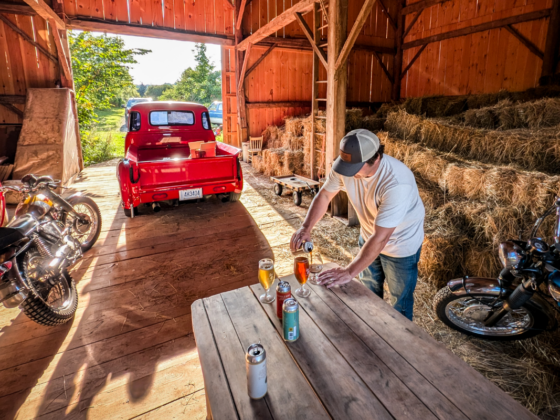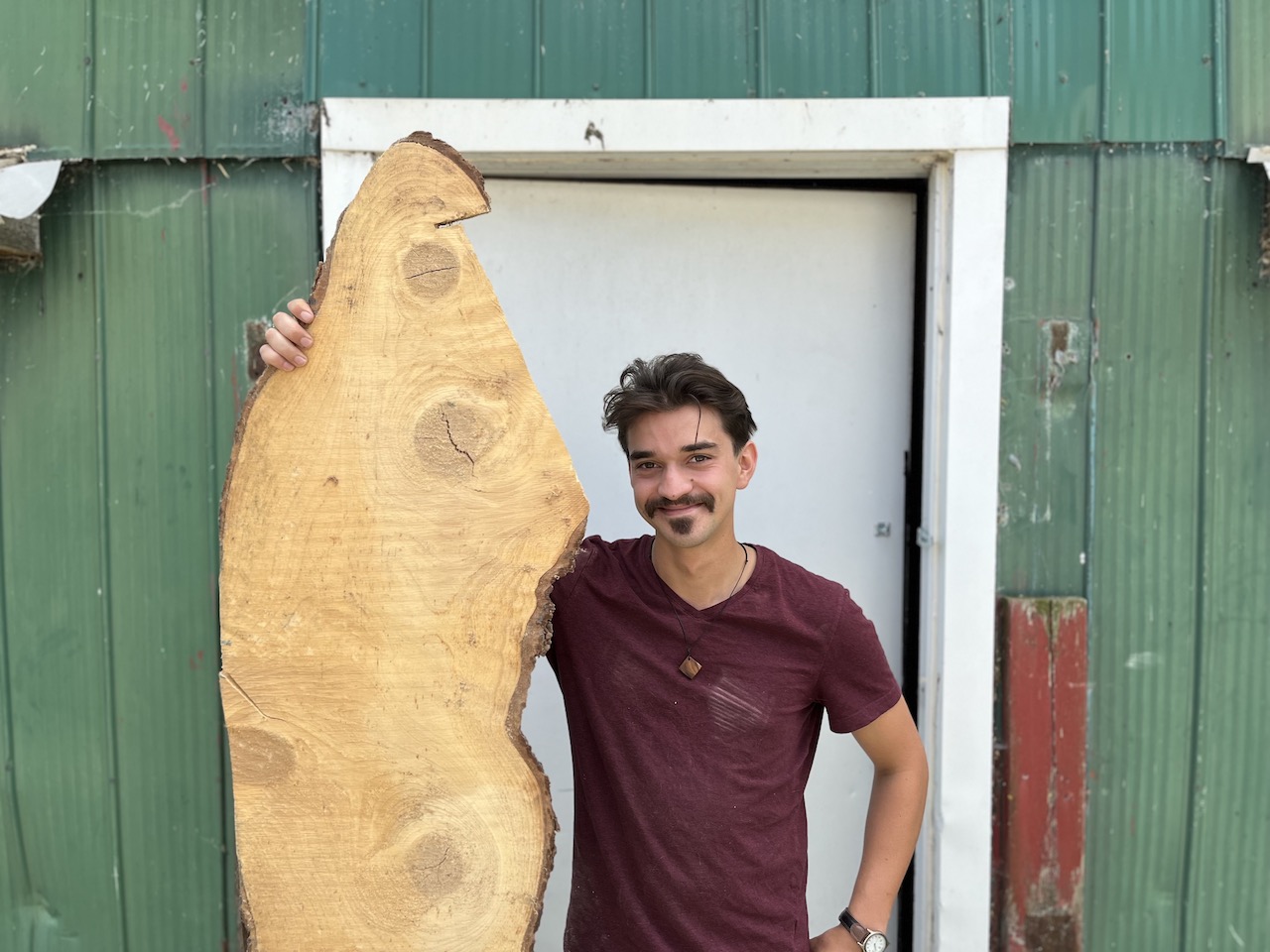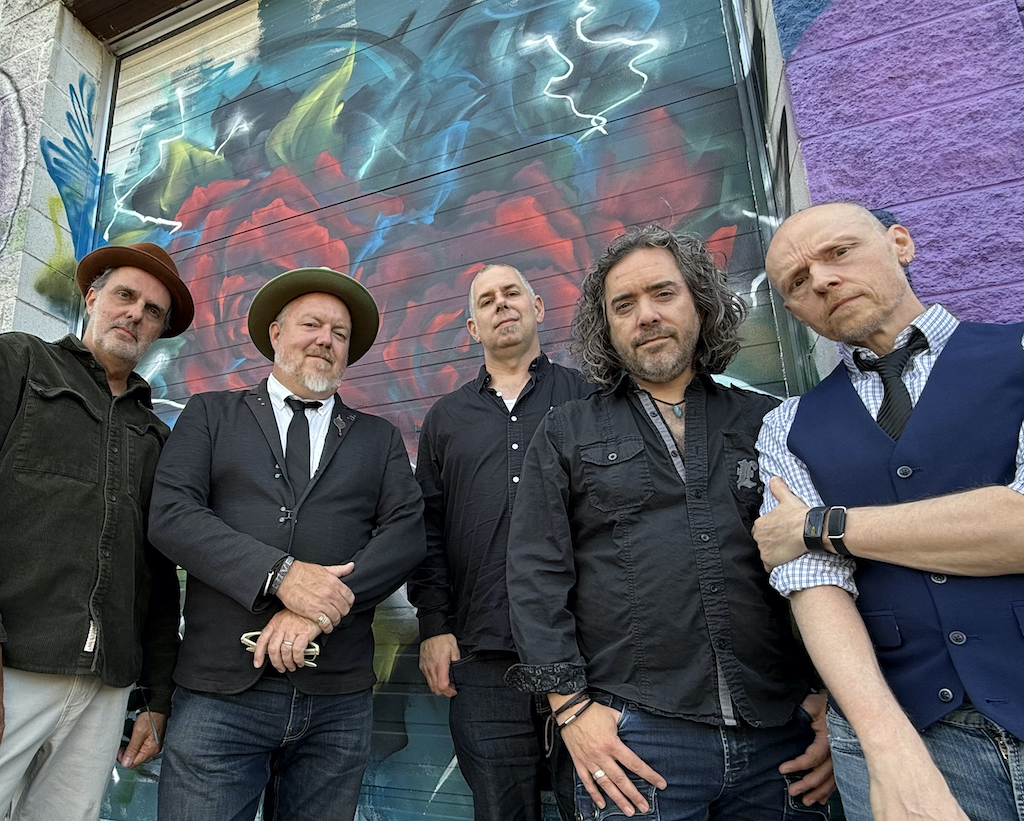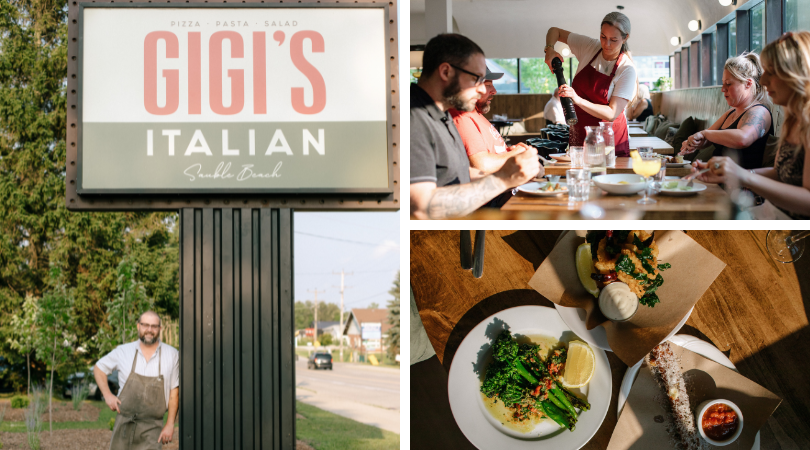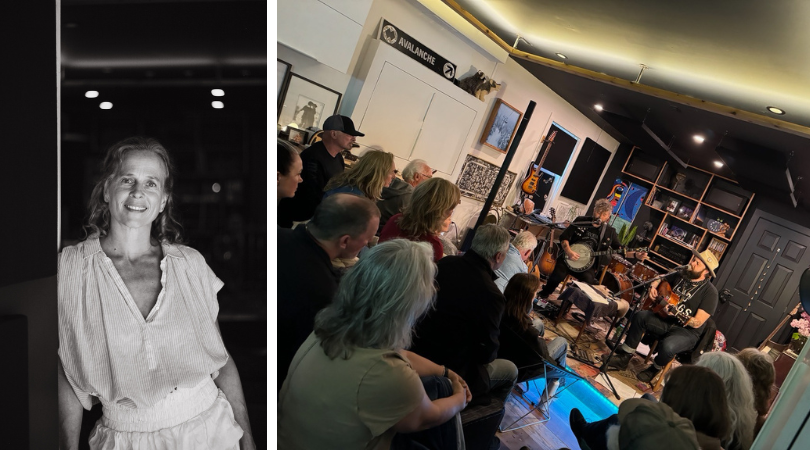Luthier Misha Radojkovic is waiting for me as I pull up at his 100 square foot studio located in a mature hardwood forest on a rolling hill between Chesley and Mooresburg. An unseasonably warm day in early February means the wood stove in the compact studio isn’t needed so we leave the door open to allow the sun to stream in. The smell of wood shavings envelope us as we begin to talk.
Misha grew up surrounded by wood working, music and art. He started playing the guitar in high school and became passionate about the instrument. Then, after graduating from Chesley District High School, he was looking to buy a guitar and found Timeless Instruments based in Tugaske, a small town in the Qu’Appelle Valley, Saskatchewan. They not only sold guitars but offered courses in making stringed instruments.
Coming from a background of carpentry, he decided to enrol in the seven-week course and built his own guitar. After graduating in 2014 he lived part time in BC where he built a ukulele. Returning home to Ontario he decided to split his time between the family’s wooden barn restoration business and making guitars.
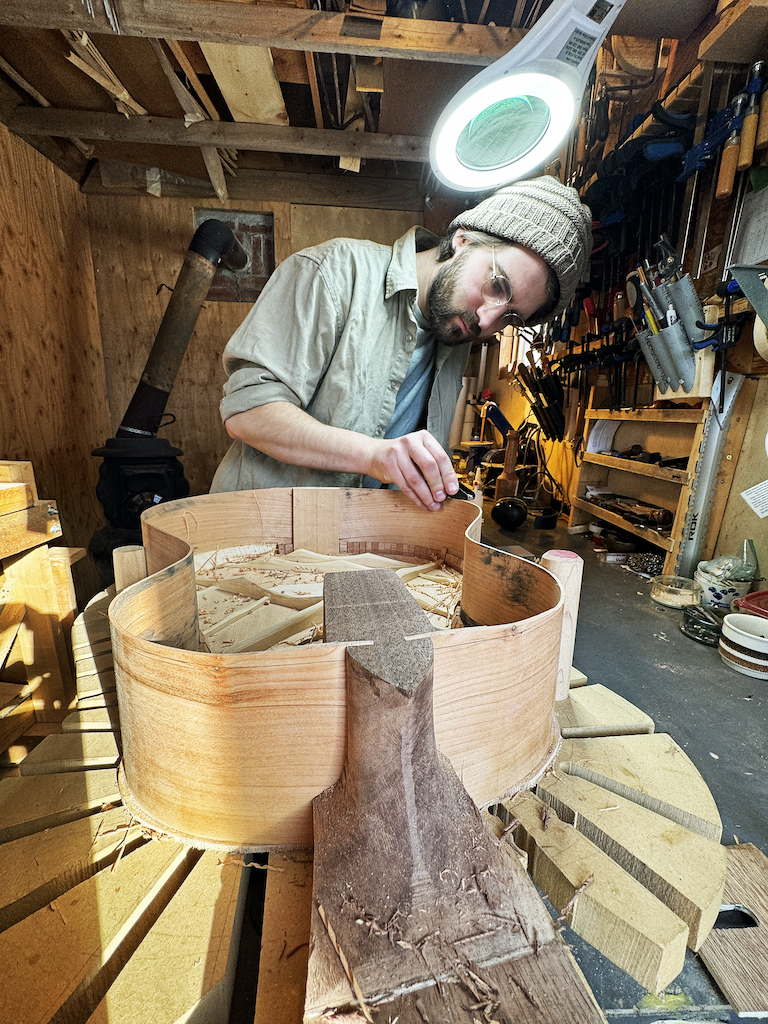
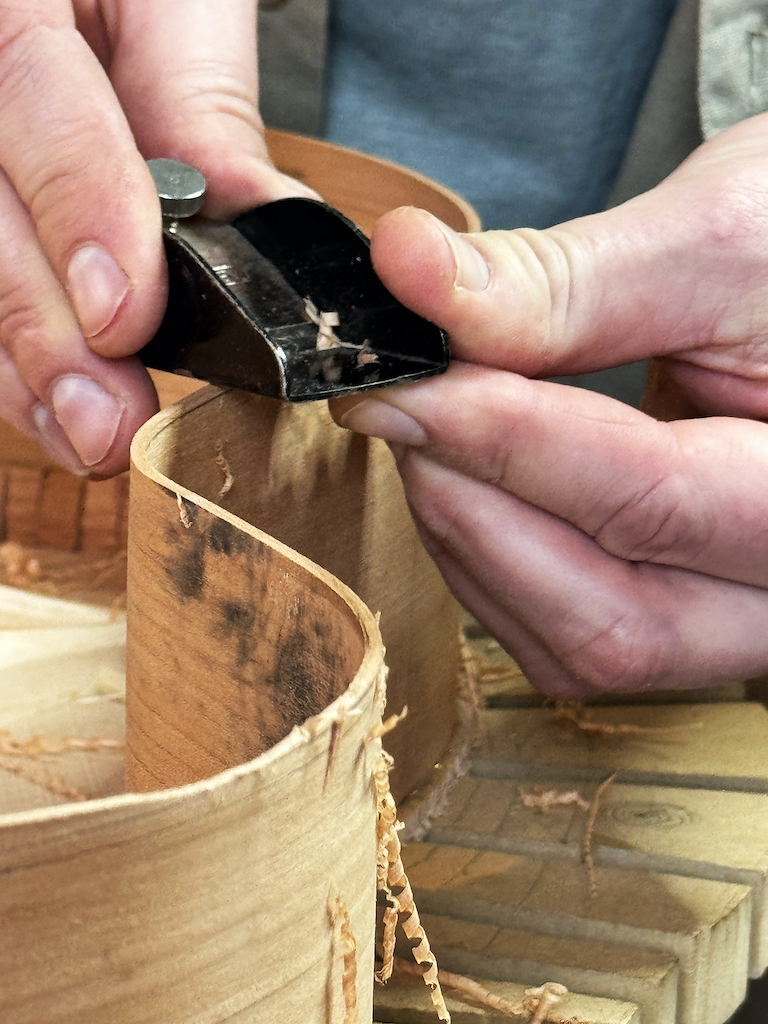
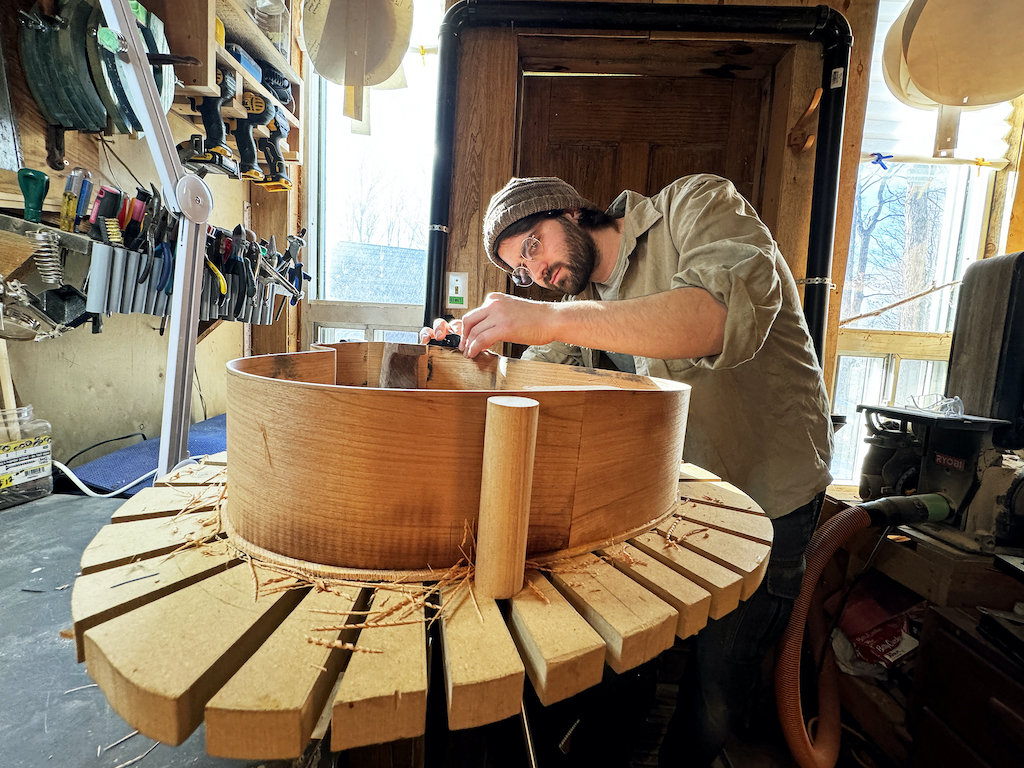
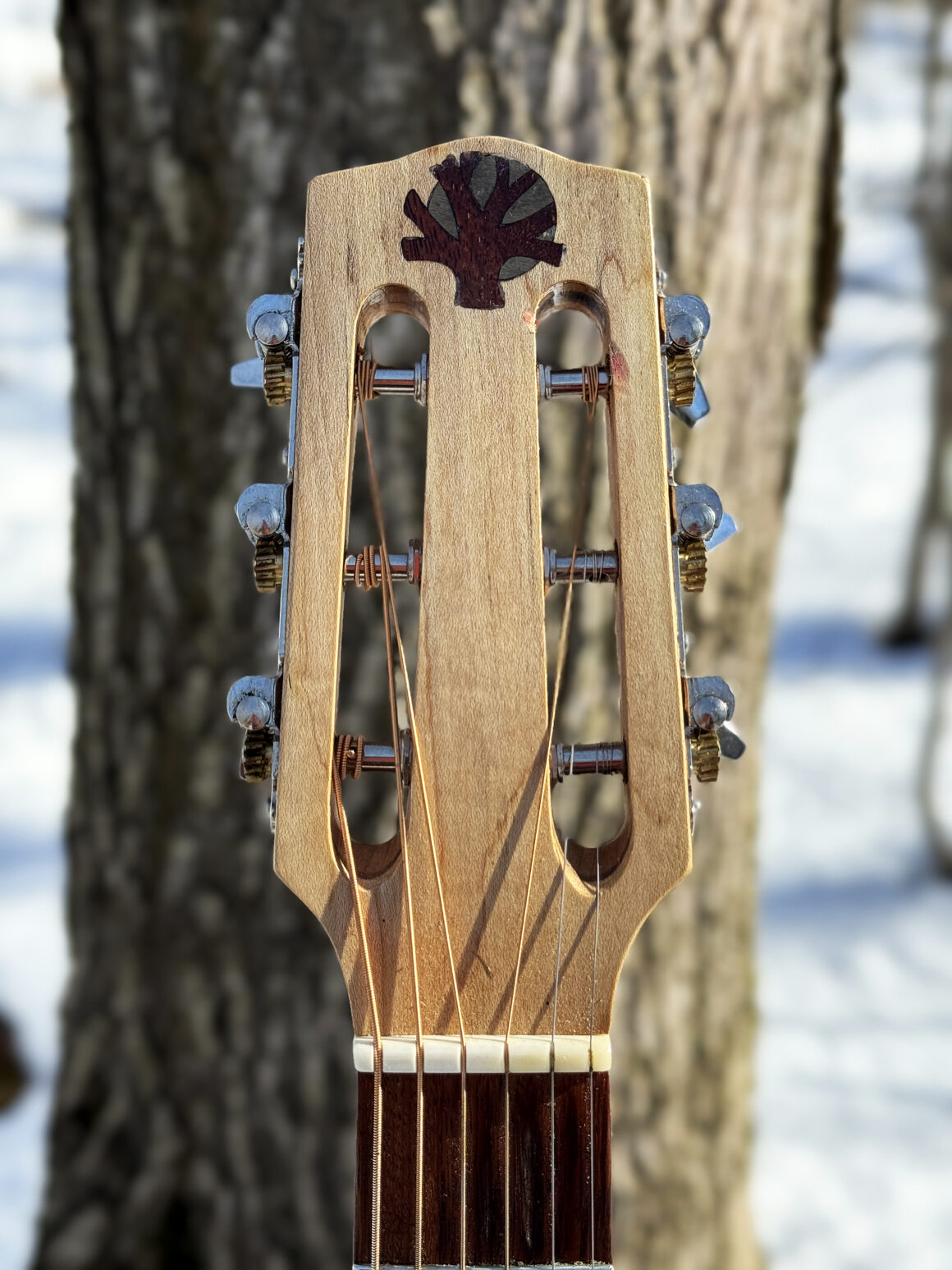
Why an Artist?
“I’ve been thinking about that because I didn’t go into building guitars as an art form necessarily, but I think it always was about art for me.
It was a logical path to take because both wood working and music were an integral part of my upbringing. My family are patrons of the arts and there was a lot of art in our home as my brothers and I grew up using hand wood working tools. I was getting more and more into music. I started to play the guitar and became very passionate about that instrument. I played in some bands and got involved with Summerfolk when I was in high school.
Eventually looking for post-secondary options, I found Timeless Instruments which is a school in Saskatchewan where you go and build a guitar in seven weeks. I was looking to buy a guitar at the time and so I was like, “why not just build a guitar?”
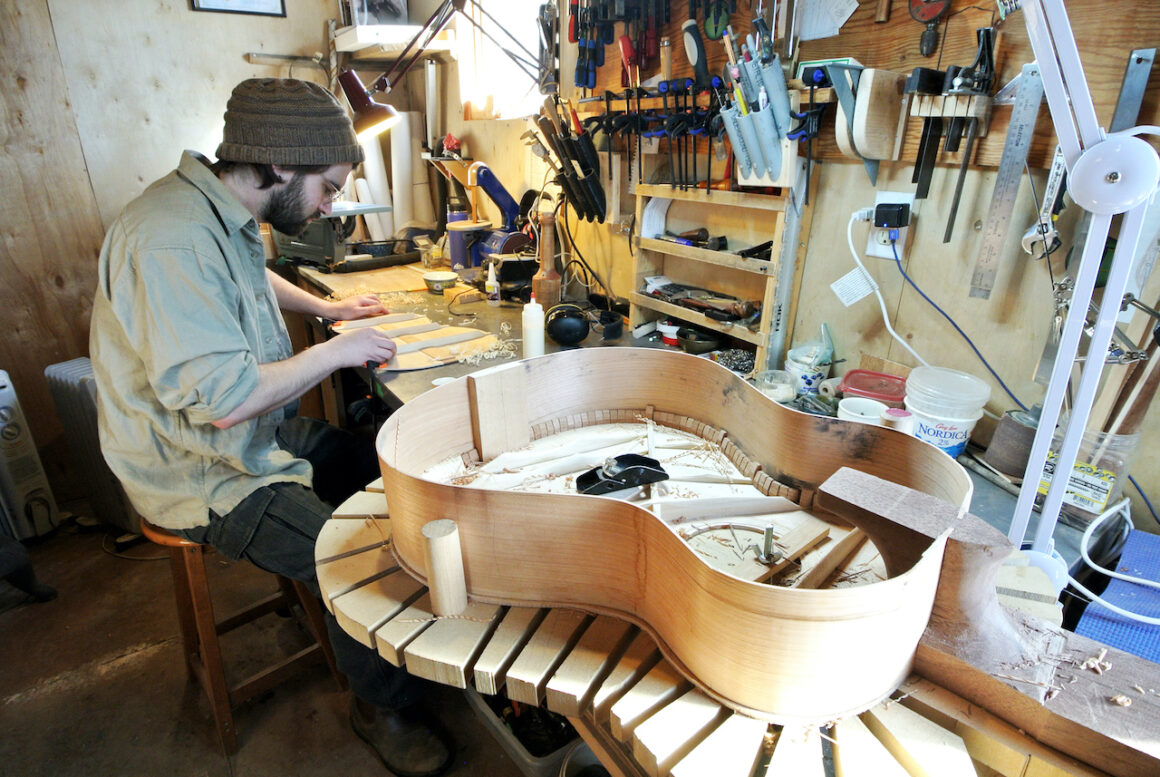
So, I applied, I got in and built a guitar in seven very intense weeks. I haven’t built a guitar in that timeframe since. And then after that, I wanted to build a second instrument. I was inspired by the fact that you need so few tools- which I already had.
At the time I was living half the time BC and built a ukulele there just to reinforce the process in my head. I returned to Ontario and built this studio. I’ve been working as a carpenter since high school so wood working and using hand tools along with my passion for music all contributed to instrument making. Once I started, I found it interesting and being supported by the arts community really helped. A lot of people I know are artists so it isn’t an “out there” thing to do, in my mind.
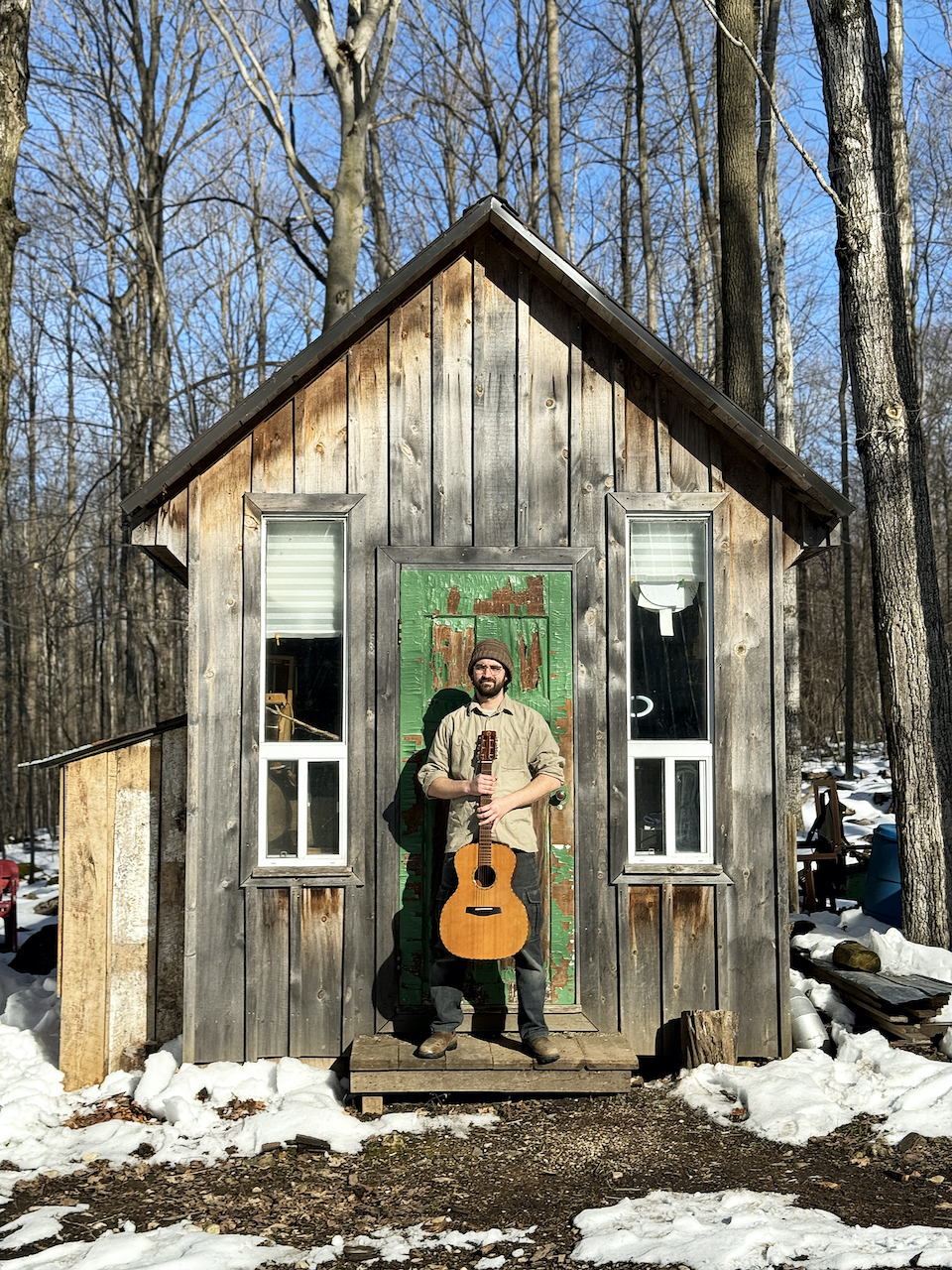
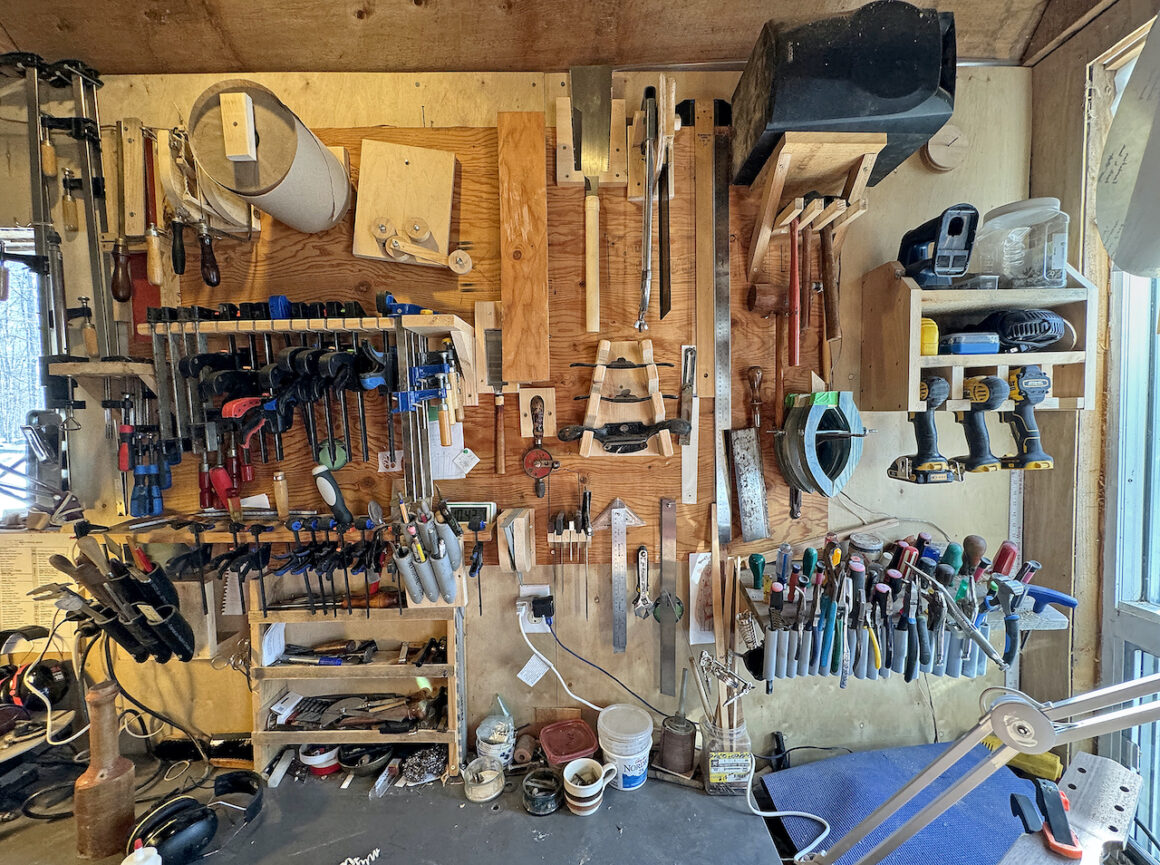
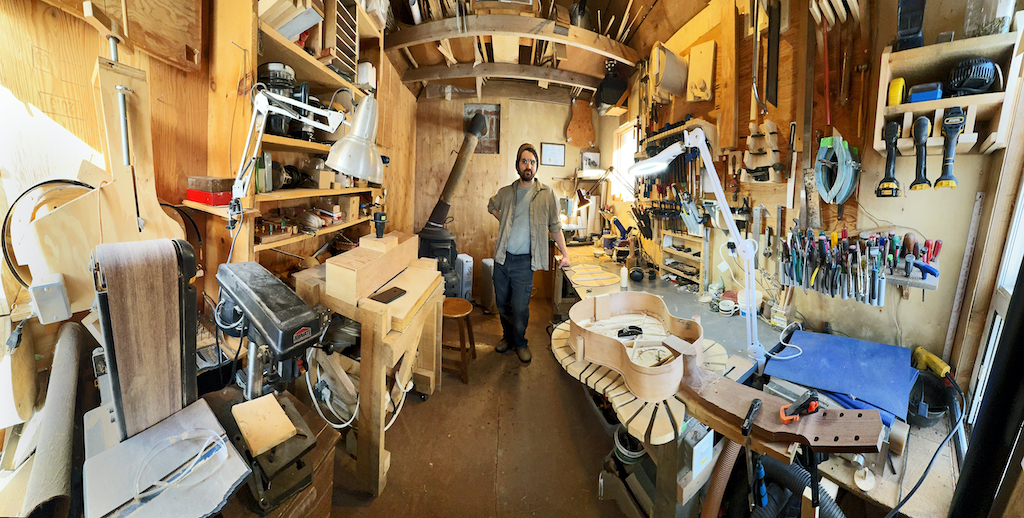
I focus on acoustic folk guitars, not classical, as that’s what I went to school for. I’ve built seven; I just build one a year. I’m lucky enough to have an order for every guitar except maybe one. With our forest here, the customer gets to choose the wood except for the top of the instrument which in terms of sound is the most important piece, so I don’t experiment with that, I get those from a supplier and it’s always stika spruce, usually Canadian.
For the back and sides I like to use our own lumber, cherry or maple are the main materials and for the neck you can use black walnut. We cut and cure our own lumber, there’s probably three or four Amish sawmills within a couple of kilometres and one of them does custom cutting so it’s an easy thing to fell a tree. We’re out there already collecting firewood and we can keep an eye on our forest and what trees might be good now or in the future for instrument making. We can take them to the mill and then air-cure the lumber in my brothers’ barn. Officially it’s about an inch a year to cure, so if you’re eager, that seems like a long time. However, when I fell a tree, and when we properly mill it, that lumber would last me 10 to 20 years.
It’s not hard to let the lumber dry because you don’t use a lot of wood in a guitar. There are so many factors in producing the sound you want in your guitar and that’s the point of building it. Every step of the way you’re affecting the sound and I’ve learned through schooling and reading the various ways to do that. It’s still always an experiment especially when you’re only building one a year. I play the guitar after it is finished and I’m always directing it to a certain sound. When you play the guitar for the first time, you’re listening for tha,t and then you can kind of affect it as you build the next one.
The tree needs to be minimum 16 to 20 inches in diameter so I’m now looking for larger trees which we only have a few of. Normally we don’t cut the biggest tree in the forest- that’s an 80 to 100 year old tree or even older. I’m looking for a large tree, a nice straight clear trunk free of growths as branches will give an irregular grain.
Ninety percent of the guitar making is done with hand tools. Using power tools you can go from shaving a very thin piece of wood to just shattering it. I use a thickness planer to a certain degree and then switch to hand tools for the fine work. I read it takes about 150 hours to make a guitar but it takes me about 2 1/2 months, so if I remember correctly, that’s around 300 hours. I thought that was because of my inexperience but every year it seems to be pretty consistent. I’ve definitely shaved off a bit of time but I’m also adding and trying new things with each new attempt.It is very easy to damage or destroy something you have been working on for days or weeks. Guitars are small. To me, it’s more like making a sculpture.”
Interview and photos by Willy Waterton



